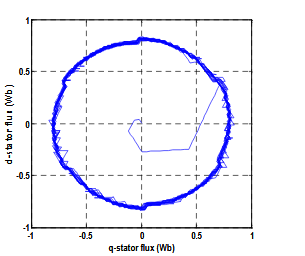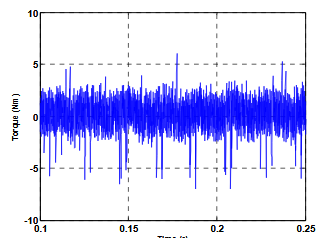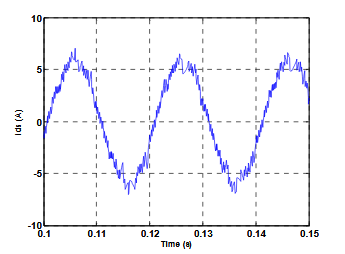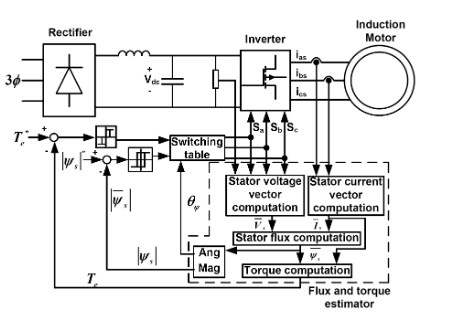ABSTRACT
Direct Torque Control is a control technique used in AC drive systems to obtain high performance torque control. The conventional DTC drive contains a pair of hysteresis comparators, a flux and torque estimator and a voltage vector selection table.
The torque and flux are controlled simultaneously by applying suitable voltage vectors, and by limiting these quantities within their hysteresis bands, decoupled control of torque and flux can be achieved. However, as with other hysteresis bases systems, DTC drives utilizing hysteresis comparators suffer from high torque ripple and variable switching frequency.
The most common solution to this problem is to use the space vector depends on the reference torque and flux. The reference voltage vector is then realized using a voltage vector modulator. Several variations of DTC-SVM have been proposed and discussed in the literature.
The work of this project is to study, evaluate and compare the various techniques of the DTC-SVM applied to the induction machines through simulations. The simulations were carried out using MATLAB/SIMULINK simulation package. Evaluation was made based on the drive performance, which includes dynamic torque and flux responses, feasibility and the complexity of the systems.
INTRODUCTION:
Induction Motors (IMs) are widely used in high performance drives. Its history is very extensive and also control is important in applications. There are many IMs in a number of industrial, commercial and domestic applications of variable speed drives. Since IMs demands well control performances: precise and quick torque and flux response, large torque at low speed, wide speed range, the drive control system is the most sensitive point of IMs.
DTC is method to control machine with utilizing torque and flux of motor controlled. The basic DTC scheme consists of two comparators having different features, switching table, Voltage Source Inverter (VSI), flux and torque estimation block and IM. Like a every control method has some advantages and disadvantages, DTC method has too.
CONTROL METHOD
DTC method has been first proposed for induction machines. DTC technique introduced by Takahashi and Noguchi for low and medium power application and DTC technique introduced by Depenbrock for high power application are popular in industry. DTC strategy is quite different from that of the field orientation control (FOC) or vector control, which does not need complicated coordination transformations and decoupling calculation.
The basic model of the conventional DTC induction motor scheme is shown in Figure 1. Two stator currents (iSA and iSB ) and DC-bus voltage VDC are sampled. d-q components of stator voltage and current space vectors in the stationary reference frame and also magnitude of the stator flux and electric torque are calculated as shown below
SIMULATION RESULTS
Two Matlab models were developed to examine the different control algorithm. One is used for the conventional DTC and the other for the modified DTC. The parameters of the induction motor are shown in Table II.

TABLE II. Parameters of the induction motor used
The steady state behavior of induction motor with the conventional DTC and SVM-DTC are illustrated in Figure 5-12. Figure 5 and 6 show a comparison of stator flux space vector obtained using two control methods. As it is possible to see in Figure 7-12 an appreciable reduction of current, flux and torque ripple has been obtained using the SVM-DTC technique.

Figure 5. d-q stator flux with conventional DTC scheme

Figure 6. d-q stator flux with SVM-DTC scheme
CONCLUSION
In classical DTC, as the torque ripple is maintained within hysteresis band, switching frequency changes with speed. Moreover, the torque ripple is important problem at low speed. So using constant switching frequency a desired torque ripple can be achieved at low speeds where it really matters. The torque ripple for this SVM-DTC is significantly improved and switching frequency is maintained constant. Numerical simulations have been carried out showing the advantages of the SVM-DTC method with respect to the conventional DTC.

Figure 9. Output torque with conventional DTC scheme

Figure 10. Output torque with SVM-DTC scheme

Figure 11. Stator d-current with conventional DTC scheme

Figure 12. Stator d-current with SVM-DTC scheme
Source: Karadeniz Technical University
Authors: Emre Ozkop | Halil I. Okumus
>> DSP-Based Space Vector Modulation Direct Torque Control of IPM Synchronous Machines
>> More Projects and Downloads on Torque Control
>> Electrical Mini Project Ideas for 3rd Year Engineering Students
>> Simple Matlab Projects Base Papers for Engineering Students
>> 200+ Matlab Projects based on Control System for Final Year Students
